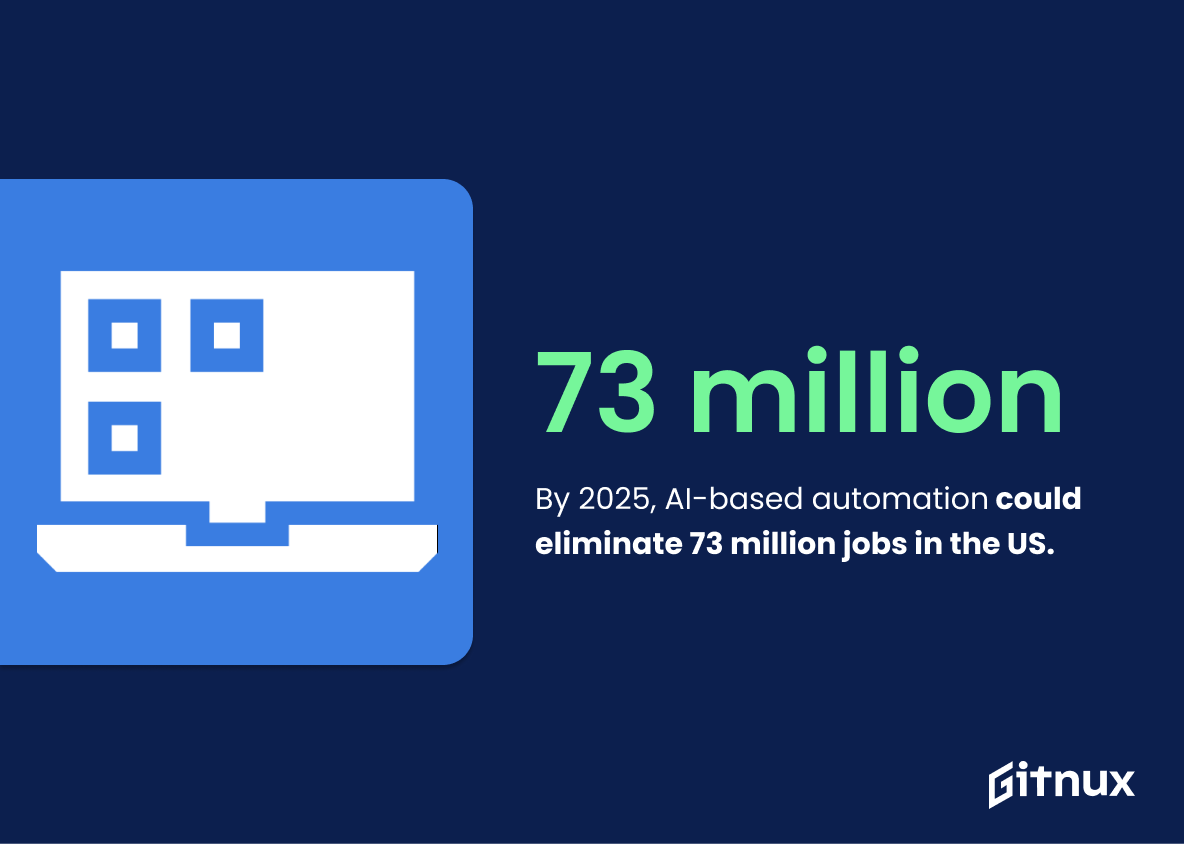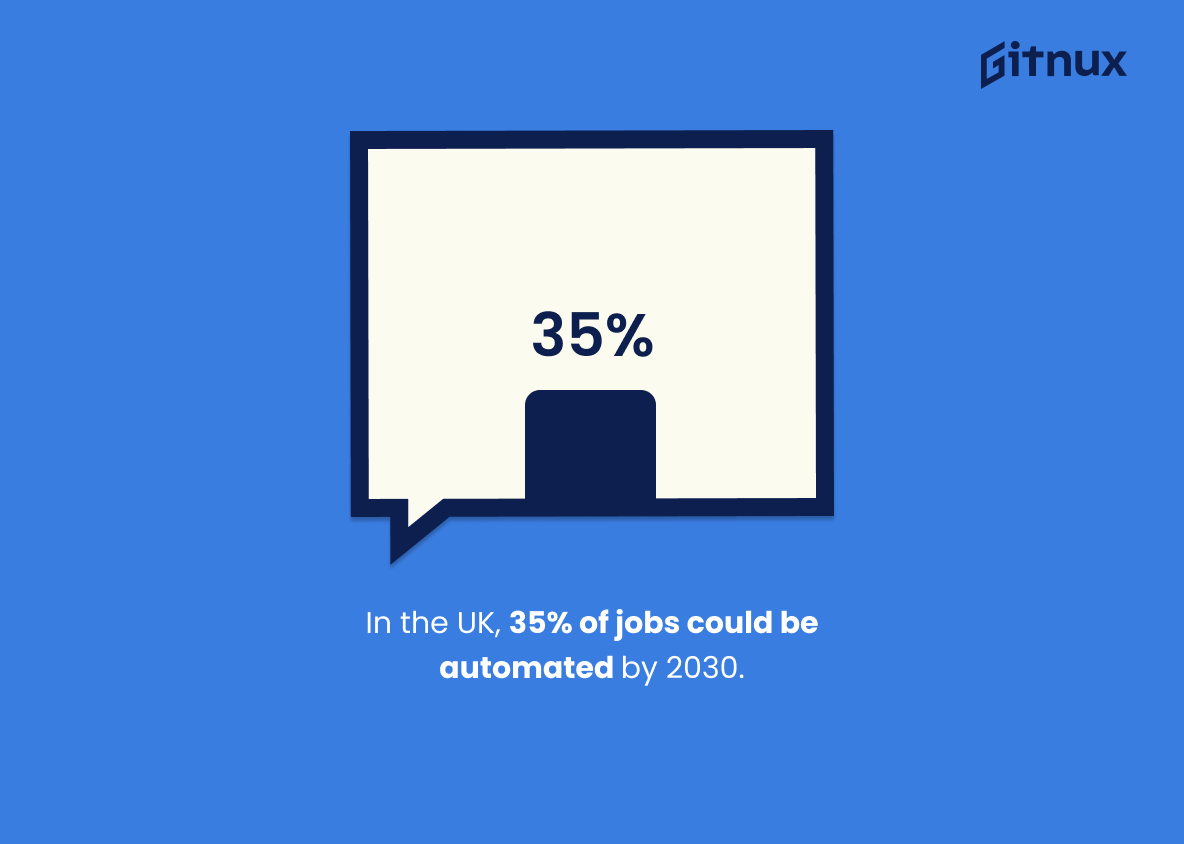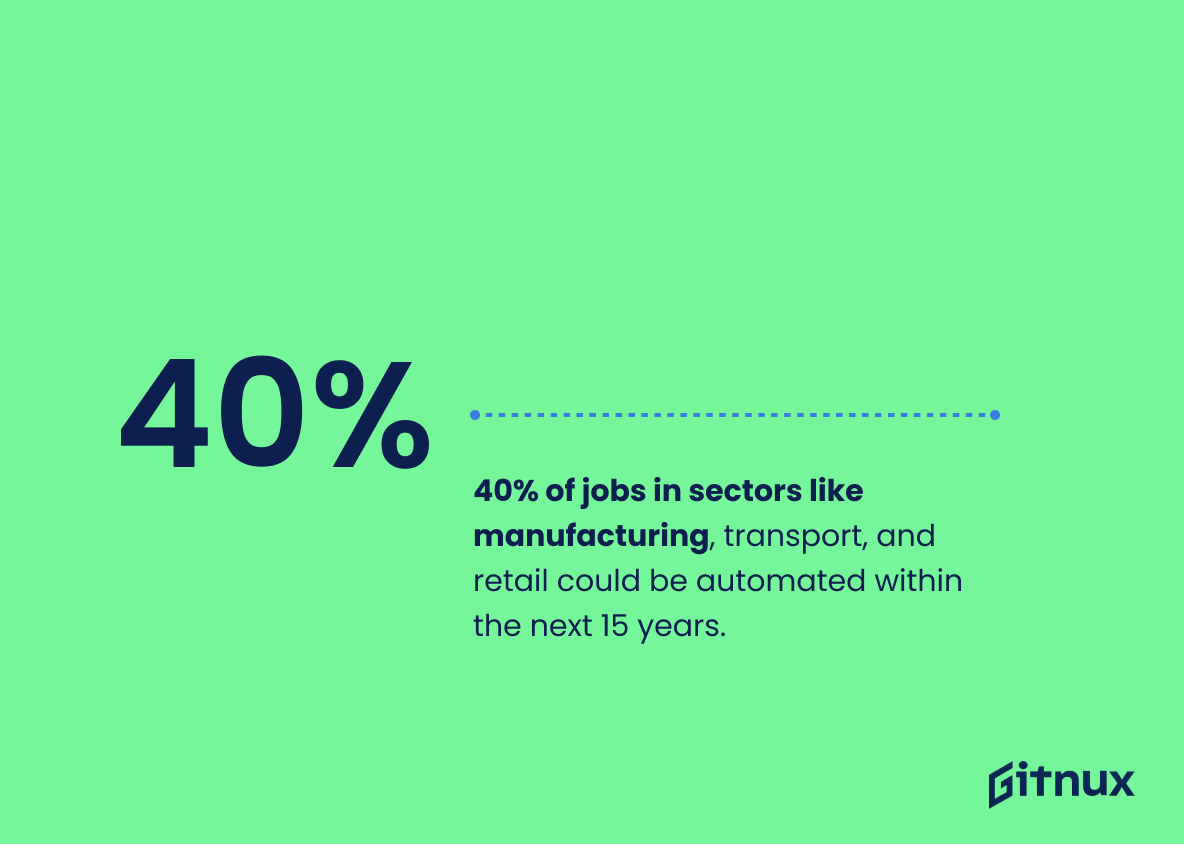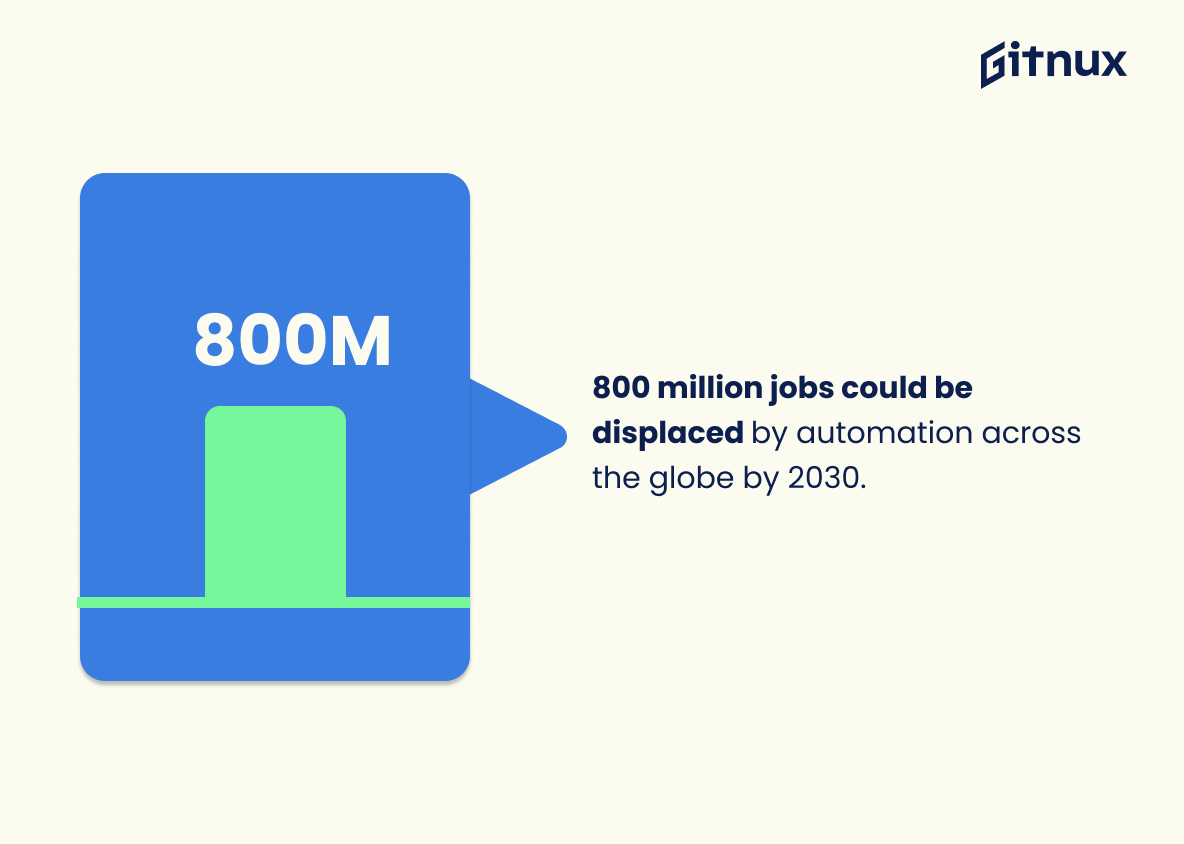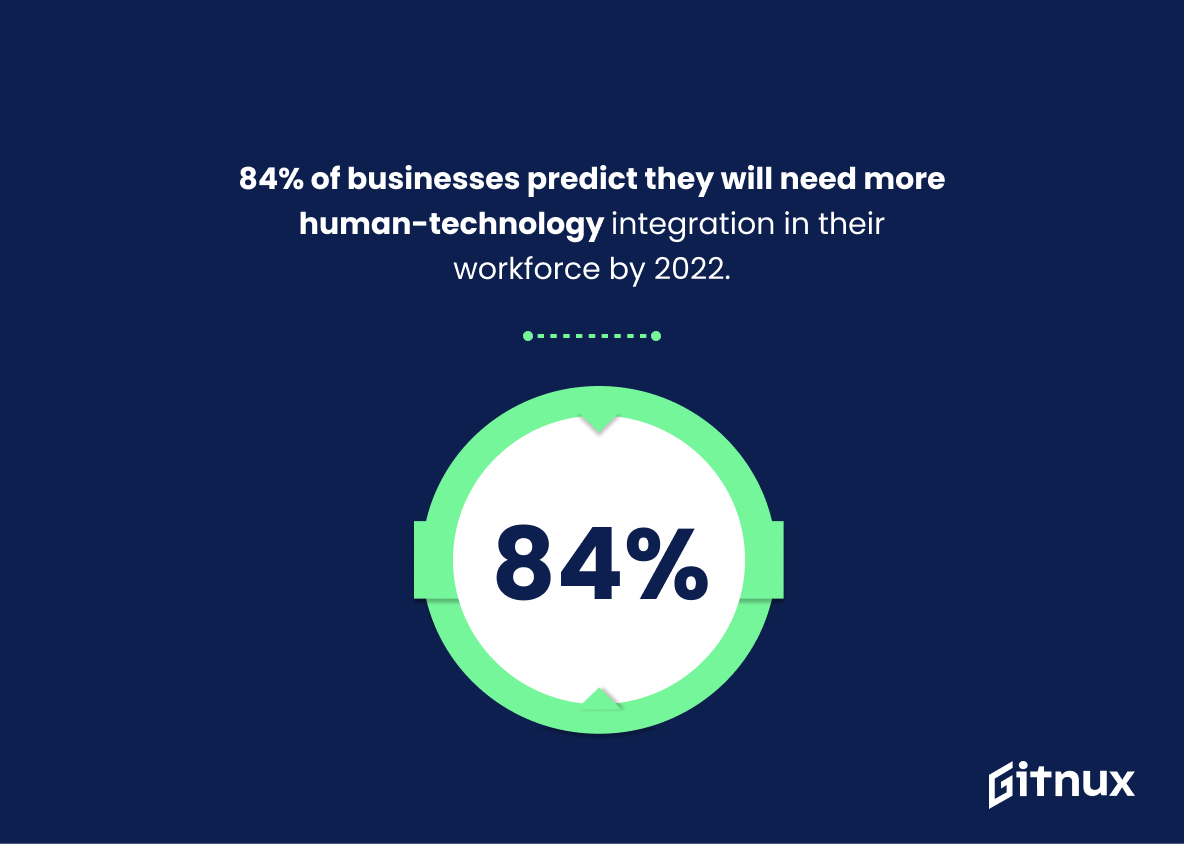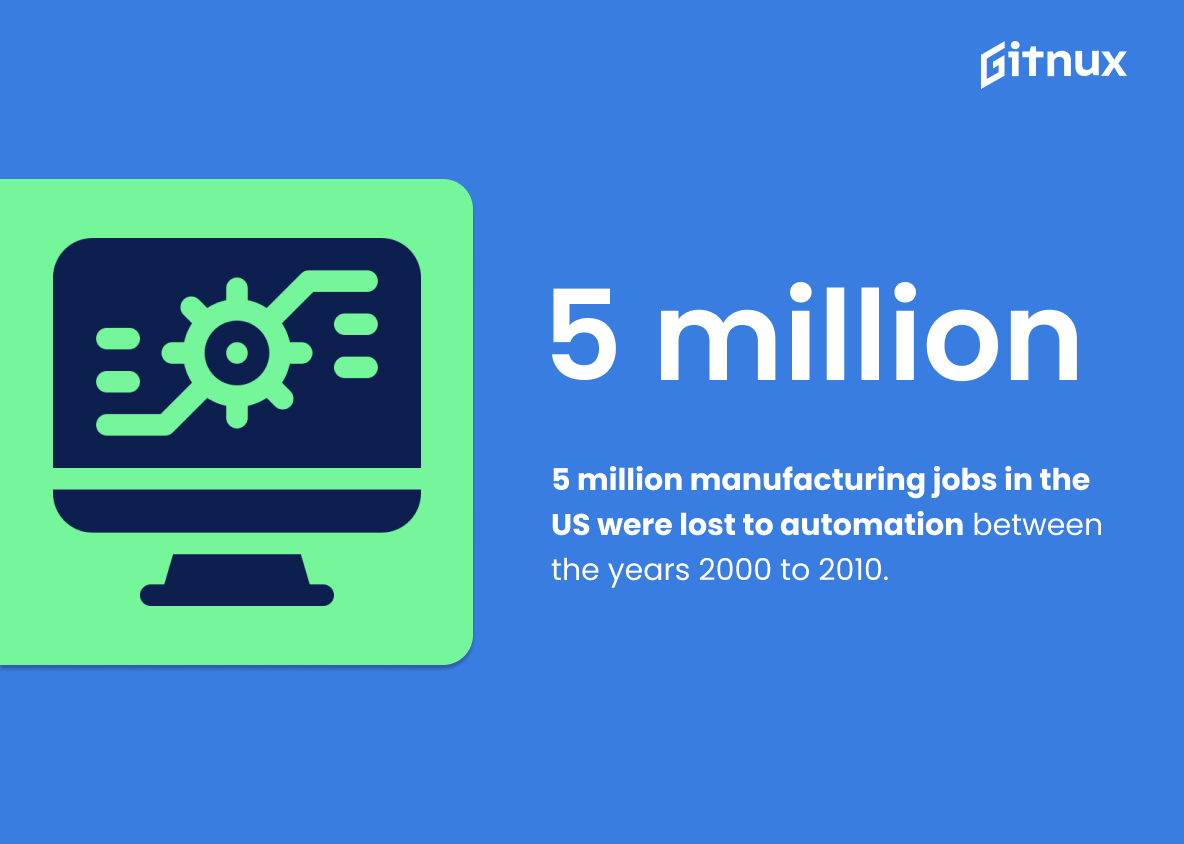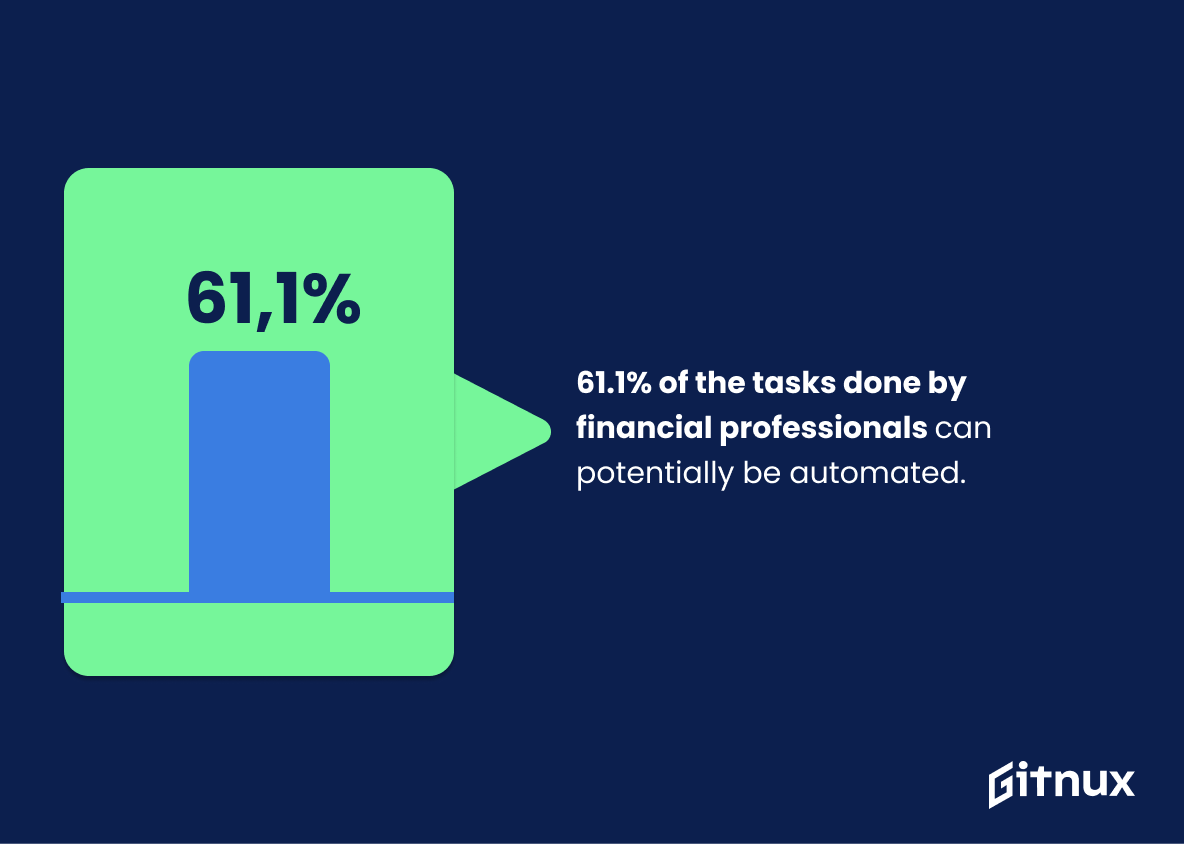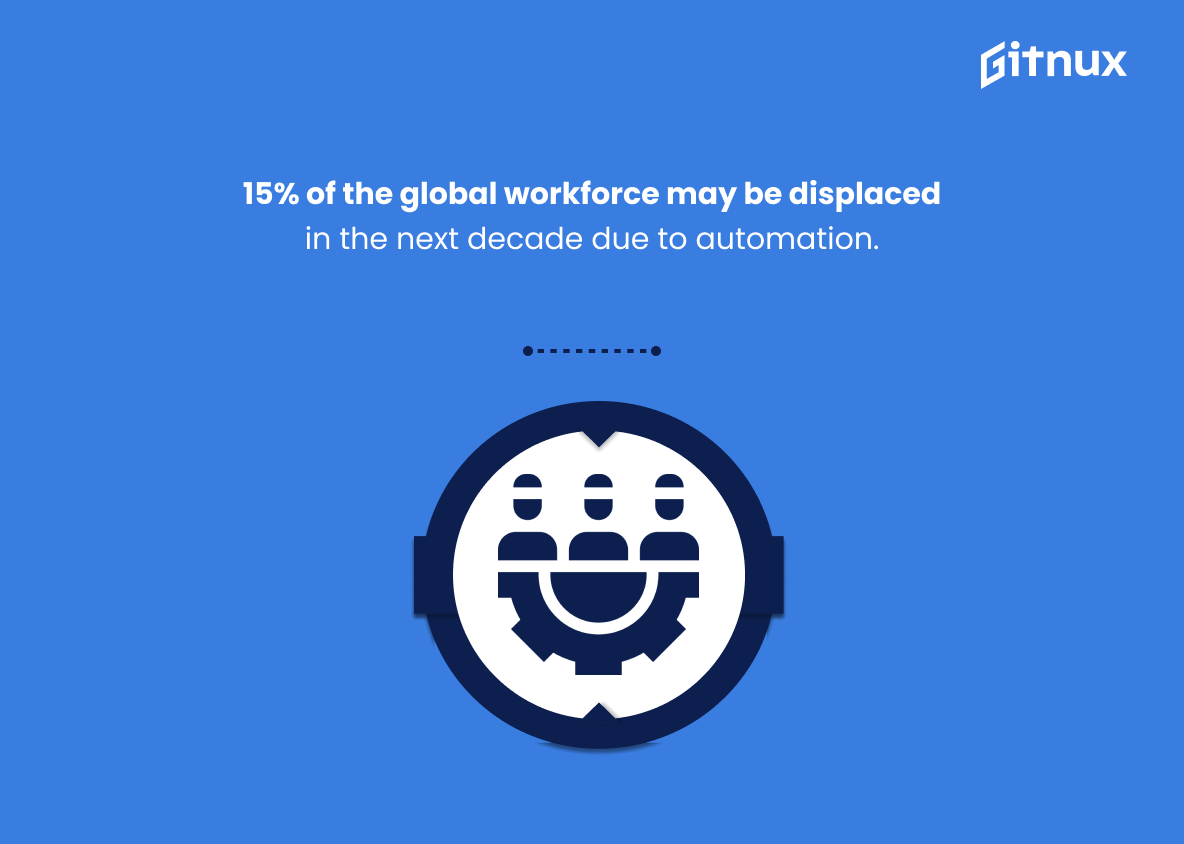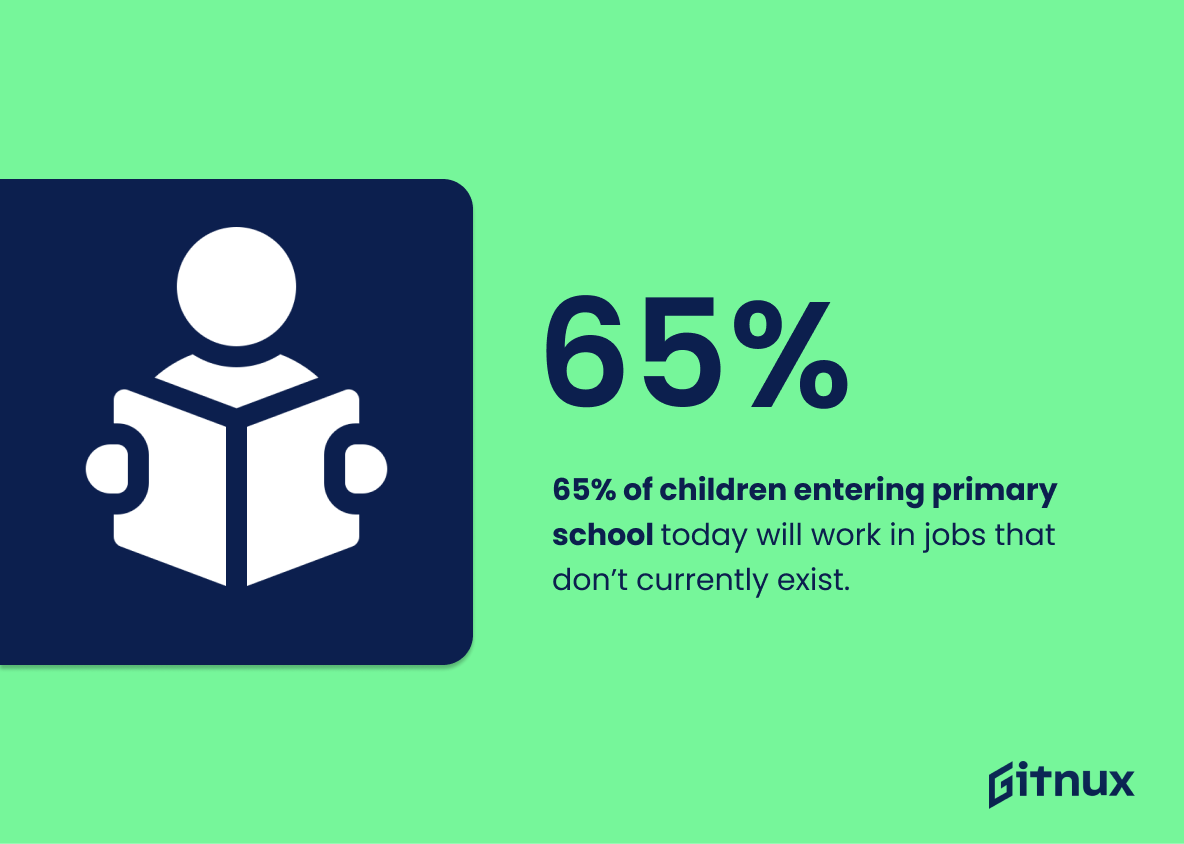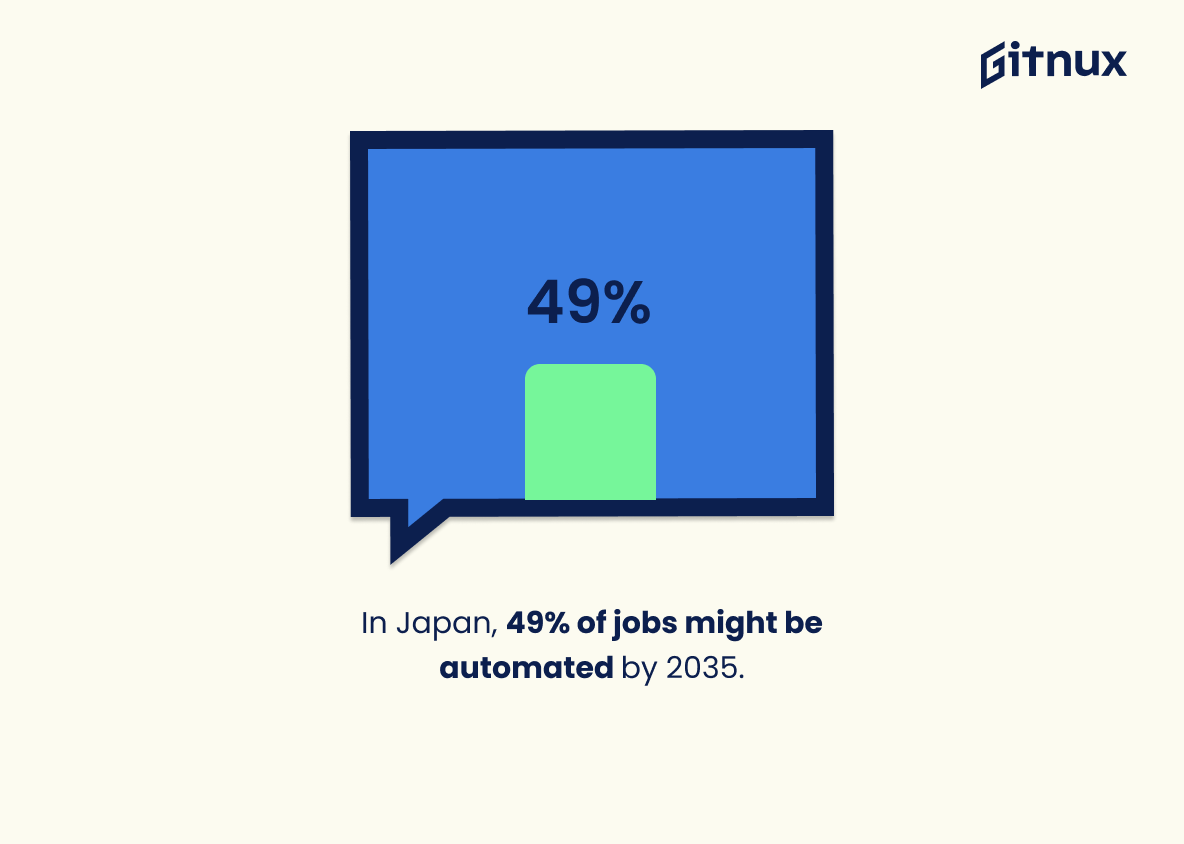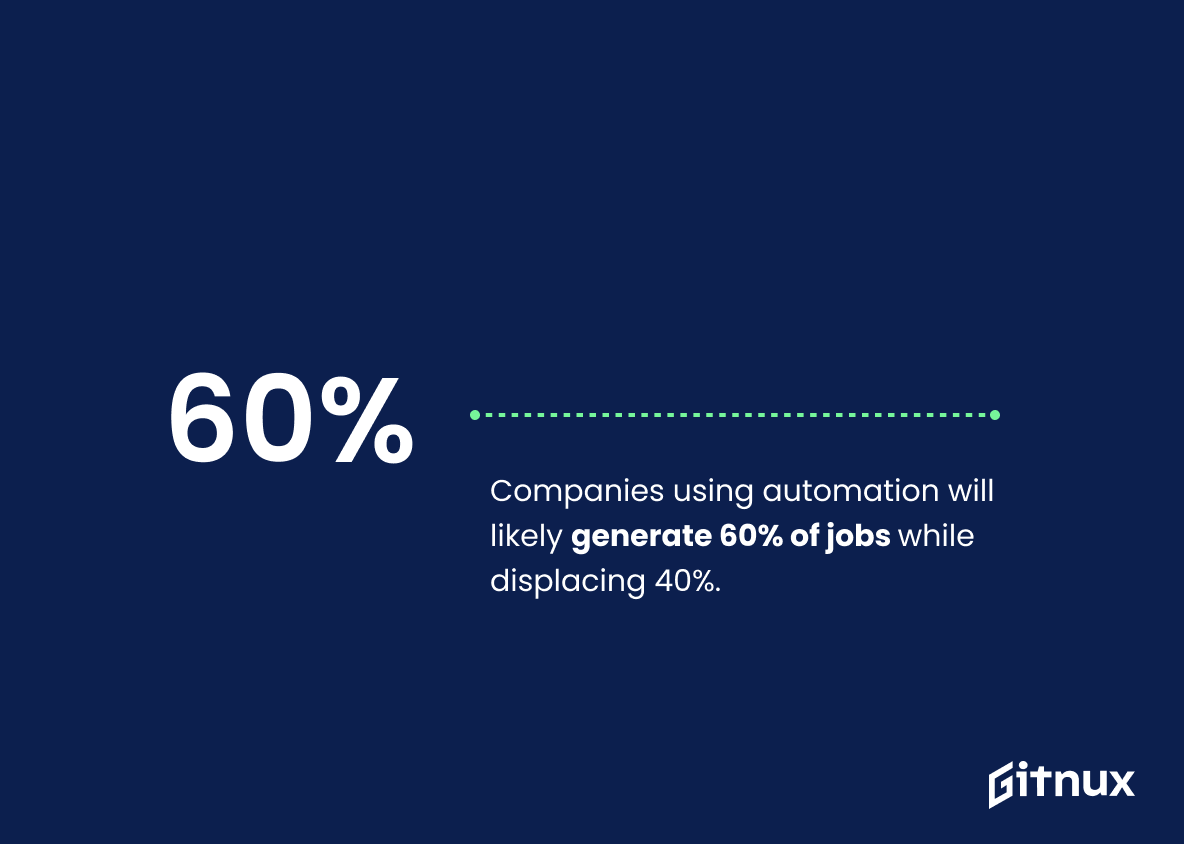As technology continues to advance, it is becoming increasingly clear that automation will have a major impact on the global workforce. Recent statistics show that 47% of total US employment is at risk of being automated and 75 million jobs may be displaced by technology globally between 2018 and 2022. In addition, AI-based automation could eliminate 73 million jobs in the US alone by 2025 while 35% of UK jobs could potentially be automated within the next decade. Furthermore, 40% of jobs in sectors like manufacturing, transport, and retail are expected to become automated over the course of 15 years with 800 million job losses across all industries worldwide predicted for 2030.
These figures demonstrate just how quickly our world is changing due to technological advancements – 84% businesses predict they will need more human-technology integration in their workforce by 2022 while 5 million manufacturing positions were lost from 2000 to 2010 as a result of automation. Additionally 230 000 investment bank roles disappeared between 2011 and 2018 along with 55 % companies planning move away from human labor towards machines globally before 2022 arrives; 11 % unemployment rate among low skilled workers can also be attributed to this shift come 2030 according to some estimates . Moreover 61 percent tasks done financial professionals can now potentially be taken care off through robots or other forms artificial intelligence ,15 percent global work force might get replaced during same period whereas 65 children entering primary school today likely end up working professions which don’t exist yet . Japan too has been affected significantly where 49 its current occupations estimated become obsolete 2035 ; however 90 executives surveyed believe change driven tech lead both job creation destruction 60:40 ratio respectively until year 2022 finally comes around . It appears travel industry United States particularly vulnerable 54 point five percentage points worth posts already threatened replaceable machinery software programs.
All these facts make one thing abundantly clear – we must prepare ourselves for an uncertain future when it comes down employment opportunities available us since no sector immune effects rapid advances made field robotics machine learning artificial intelligence etcetera
This statistic is a stark reminder of the potential for technology to replace human labor. It highlights the need for individuals to stay ahead of the curve and be prepared for the changing job market. It also serves as a warning to employers that they must be aware of the potential for automation and plan accordingly. Ultimately, this statistic speaks to the power of technology and its potential to disrupt the job market.
75 million jobs may be displaced by technology globally between 2018 and 2022.
This statistic is a stark reminder of the potential impact of technology on the global job market. It highlights the need for governments, businesses, and individuals to be aware of the potential for technology to displace jobs and to take proactive steps to ensure that those affected are supported. It also serves as a warning to those who may be complacent about the potential for technology to disrupt the job market and to take steps to ensure that they are prepared for the changes that may come.
Technology Taking Over Jobs Statistics Overview
By 2025, AI-based automation could eliminate 73 million jobs in the US.
This statistic is a stark reminder of the potential impact of AI-based automation on the US job market. It paints a worrying picture of a future where millions of jobs could be lost to automation, leaving many people without work and struggling to make ends meet. This statistic is a powerful reminder of the need to ensure that technology is used responsibly and that measures are taken to protect workers from the potential negative impacts of automation.
In the UK, 35% of jobs could be automated by 2030.
This statistic is a stark reminder of the potential impact of technology on the job market in the UK. It highlights the fact that automation could have a significant effect on the number of jobs available in the near future, and that this could have a major impact on the lives of many people. It is a statistic that should not be ignored, and one that should be taken into account when considering the implications of technology on the job market.
40% of jobs in sectors like manufacturing, transport, and retail could be automated within the next 15 years.
This statistic is a stark reminder of the potential impact of technology on the job market. It suggests that a significant portion of the workforce could be displaced by automation in the near future, with potentially devastating consequences for those employed in sectors like manufacturing, transport, and retail. This statistic is a wake-up call for those who may not have considered the potential implications of technology on their job security.
800 million jobs could be displaced by automation across the globe by 2030.
This statistic is a stark reminder of the potential impact of automation on the global workforce. It paints a picture of a future where millions of jobs are at risk of being replaced by machines, and highlights the need for governments and businesses to take action to ensure that workers are not left behind. It is a call to action for those in positions of power to consider the implications of automation and to take steps to protect the livelihoods of those who may be affected.
84% of businesses predict they will need more human-technology integration in their workforce by 2022.
This statistic is a telling indication of the direction the job market is heading in. It suggests that businesses are expecting to rely more heavily on technology in the near future, which could mean that more jobs will be replaced by machines and automation. This statistic is a clear sign that technology is taking over jobs, and it is important to consider the implications of this trend.
5 million manufacturing jobs in the US were lost to automation between the years 2000 to 2010.
This statistic serves as a stark reminder of the impact that automation has had on the US manufacturing industry. It highlights the fact that technology has been able to replace millions of jobs in a relatively short period of time, and that this trend is likely to continue in the future. This statistic is an important piece of evidence to consider when discussing the potential of technology to take over jobs.
55% of companies plan to move from human labor to automation globally by 2022.
This statistic is a stark reminder of the reality that technology is rapidly replacing human labor in the workplace. By 2022, a majority of companies will have adopted automation, leaving many workers without jobs. This statistic is a wake-up call for those who are unprepared for the changing job market and the need to stay ahead of the curve in order to remain competitive.
In 2025, global unemployment of low-skilled workers could rise by 11% due to automation.
This statistic is a stark reminder of the potential impact of automation on the global workforce. It highlights the need for governments and businesses to take proactive steps to ensure that low-skilled workers are not left behind in the wake of technological advances. It also serves as a warning that the future of work may be drastically different than what we know today, and that we must be prepared to adapt to the changing landscape.
61.1% of the tasks done by financial professionals can potentially be automated.
This statistic is a stark reminder of the potential for technology to replace human labor in the financial sector. It highlights the need for financial professionals to stay ahead of the curve and be prepared for the possibility of automation taking over their jobs. It also serves as a warning to those who may be considering a career in finance, as it shows that the industry is rapidly changing and may not be as secure as it once was.
15% of the global workforce may be displaced in the next decade due to automation.
This statistic is a stark reminder of the potential impact of automation on the global workforce. It highlights the need for governments, businesses, and individuals to take proactive steps to ensure that the transition to a more automated future is managed in a way that minimizes the disruption to people’s lives.
65% of children entering primary school today will work in jobs that don’t currently exist.
This statistic is a stark reminder of the ever-changing nature of the job market, and how technology is rapidly transforming the way we work. It highlights the need for individuals to stay ahead of the curve and be prepared for the jobs of the future, which may not even exist yet. It also serves as a warning to employers to ensure they are investing in the right technology and training to ensure their workforce is equipped to handle the jobs of tomorrow.
In Japan, 49% of jobs might be automated by 2035.
This statistic is a stark reminder of the potential impact of technology on the job market in Japan. It paints a picture of a future where nearly half of all jobs could be automated, leaving many people without work. This is a worrying prospect for those who rely on their jobs to make a living, and it is a reminder of the need to prepare for a future where technology is increasingly taking over jobs.
Companies using automation will likely generate 60% of jobs while displacing 40%.
This statistic is a stark reminder of the impact technology is having on the job market. It highlights the fact that automation is not only creating jobs, but also displacing them. This is an important point to consider when discussing the implications of technology taking over jobs.
Since the 2000s, jobs requiring routine technical and cognitive skills hours fell by 1.2%.
This statistic serves as a stark reminder of the impact technology has had on the job market in the 2000s. It highlights the fact that technology has been able to replace many jobs that once required routine technical and cognitive skills, leading to a decrease in the number of hours worked in those positions. This is a clear indication of the power of technology and its ability to automate and streamline processes, leading to fewer jobs and fewer hours worked.
90% of executives said technology-driven change will lead to job loss in their company globally by 2022.
This statistic is a stark reminder of the potential impact of technology-driven change on the job market. It paints a picture of a future where a large portion of the workforce could be displaced by automation and other technological advances. This statistic is a wake-up call for those who may not have considered the potential implications of technology on their job security. It is a reminder that the future of work is uncertain and that we must be prepared to adapt to the changing landscape.
In the US, automation could potentially affect up to 54.5% of jobs in the travel industry.
This statistic is a stark reminder of the potential impact of automation on the travel industry. It highlights the need for businesses to be aware of the potential risks of automation and to take steps to ensure that their employees are not adversely affected. It also serves as a warning to those in the travel industry to be prepared for the potential disruption that automation could bring.
Conclusion
The statistics presented in this blog post demonstrate the potential for technology to take over jobs on a global scale. In the US, 47% of total employment is at risk of being automated and up to 54.5% of jobs in the travel industry could be affected by automation. Globally, 75 million jobs may be displaced between 2018 and 2022 while 800 million could potentially be lost by 2030 due to automation across all sectors including manufacturing, transport, retail and finance. Additionally, 5 million manufacturing jobs have already been lost since 2000 as well as 230 thousand investment banking positions from 2011-2018 alone.
Companies are increasingly turning towards human-technology integration with 84% predicting they will need more such integration within their workforce by 2022; 55% plan to move away from human labor entirely globally during that same time frame which would lead to an 11 percent rise in unemployment among low skilled workers worldwide come 2025. Finally it has been estimated that 65 percent of children entering primary school today will work in roles not currently existing yet – further emphasizing how much our job market is set for change due to technological advances over the next decade or so..
References
0. – https://www.osha.europa.eu
1. – https://www.ibisworld.com
2. – https://www.mckinsey.com
3. – https://www.oxfordmartin.ox.ac.uk
4. – https://www.mercer.com
5. – https://www.aisel.aisnet.org
6. – https://www.weforum.org
7. – https://www.economist.com
8. – https://www.pwc.co.uk
9. – https://www.obamawhitehouse.archives.gov
10. – https://www.accenture.com
11. – https://www..deloitte.com
12. – https://www.cspinet.org
